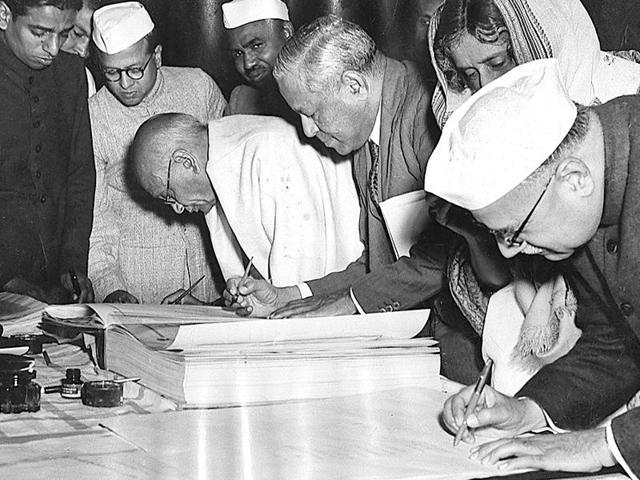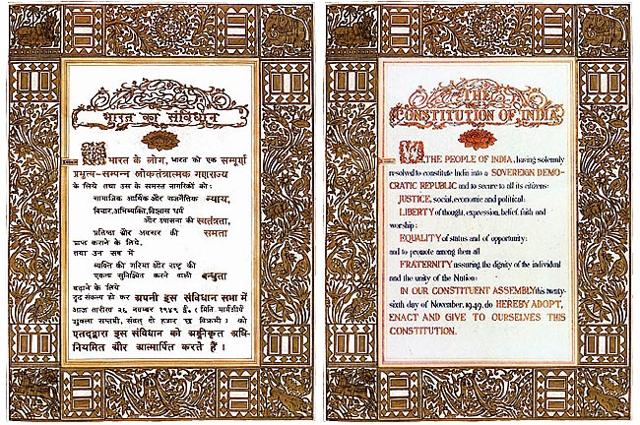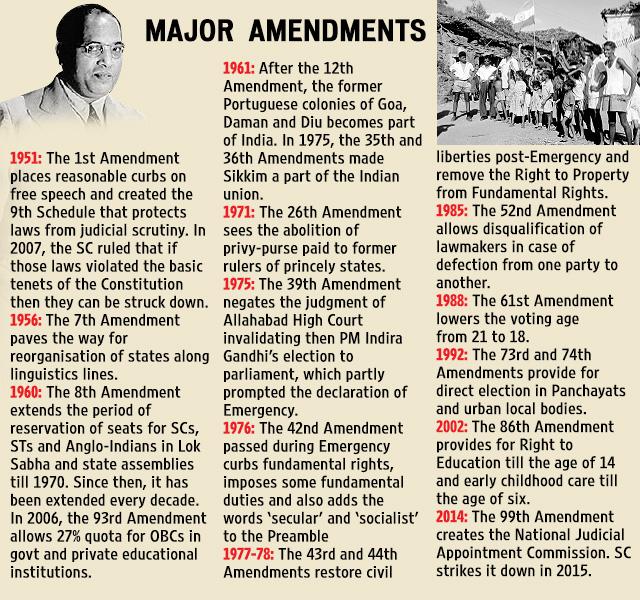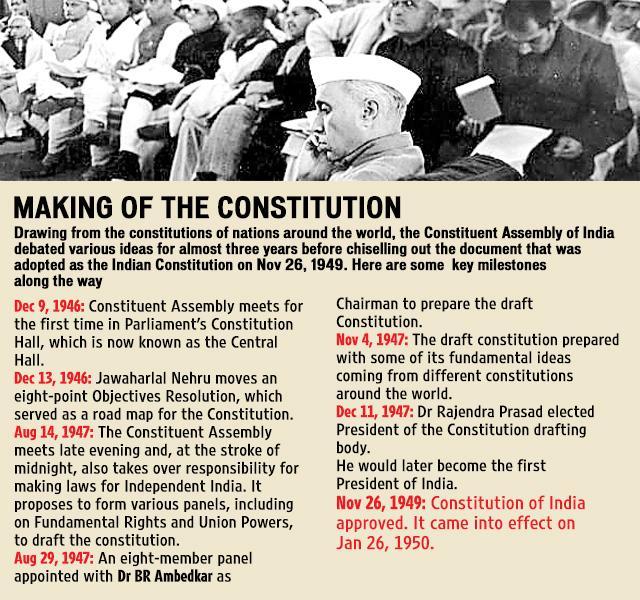Document for all ages: Why Constitution is our greatest achievement
The Constitution, encompassing a multi-cultural and multi-religious civilisation, will carry the country into the future.
If India were to try and draft a Constitution today she would almost certainly fail. The significant achievement of India’s Constituent Assembly is that it created a Constitution which has survived.

Pakistan’s assembly took seven years to draft the country’s Constitution (1956), which collapsed in 1958 and again in 1969, 1978 and so on. India’s Constituent Assembly had men of genius with vision, passion, integrity and patience who were not angling for power. Let no one trivialise their foundational achievement.
India’s Constitution has been amended around one hundred times.The crucial question is: is a Constitution in a state of being or becoming? Is it static, or does it need to change with time? Essentially, the amendments fall into four categories.
The first: social justice and reformist amendment for agrarian reforms. A second set of changes re-wrote the map of Indian federalism by creating more and more states. What an achievement! The third area of changes was Indira Gandhi’s infamous amendments, including those during the Emergency. The amendments were opportunistic, self-serving and constitutionally disgraceful. It is no wonder that the SC turned round to her in the Basic Structure case to say: “No more Mrs Gandhi, no more, you can amend the Constitution but not alter its basic structure”. The fourth class of amendments was corrective amendments. Our politicians were abusing the Constitution. President’s Rule was imposed 100 times – mostly to topple state governments.

Several attempts were made in 1987 and 2003 to ensure that legislators do not play unscrupulous ‘aaya-Ram-gaya-Ram’ politics. But it hasn’t stopped. Our Constitution is founded on two premises: democracy (dominated by politicians) and rule of law justice (ensured by the higher courts). You cannot have one without the other. Without democracy, there would be autocracy; without rule of law, there would be lawlessness.
Read | Directive principles of state policy: Conscience of the Constitution
But the visible Constitution has to be guided by invisible norms. We can’t have legislators throwing furniture at each other, preventing entire sessions from taking place. True, elections take place. But an electoral democracy based on money, muscle and communalism mars the democratic endeavour. Without invisible institutional principles to guide the Constitution, it will fail, which hasn’t happened yet.

The judiciary, however, has transformed itself to speak of peoples’ concerns. The Indian Constitution is distinct from others. It does not just allocate power between the federation and the legislature, executive and the judiciary; it has a soul. It has a purpose: to achieve social and distributive justice. This is to be found in its Preamble and the Directive Principles of State Policy.
Can India provide social justice, food, health, work, housing, environment, non-discrimination for all? Politics has made the Constitution a gift for the entrepreneur, politician and wheeler-dealers. But eventually, the electorate call the shots. Real participatory democracy however, is some distance away.
Read | Let’s uphold the ideals and values of our Constitution: PM Modi
How do we review the past 65 years? With some misgivings and a faint hope that the Constitution will achieve social justice for all. But don’t knock it. It is the people who gave the Constitution unto themselves. Each time they vote, or protest, they put the Constitution in its place. India is a multi-cultural, multi-religious civilization of enormous diversities. To capture all this in the embrace of its versatile Constitution is an unparalleled achievement, which will carry India into the future.

(The author is a senior advocate, Supreme Court)
Fast facts
- The Constituent Assembly was to have 389 members. But its membership was reduced to 299 after Partition. In all, 284 members signed the Constitution on Jan 24, 1950.
- After 100 amendments, the Constitution of India now has 448 articles in 25 parts, 12 schedules and 5 appendices.
- The concept of fundamental rights was inspired by the American constitution, the concept of Liberty, Equality and Fraternity from the French, the directive principles of state policy from the Irish and the Emergency provisions from Germany.
- The Constitution was handwritten in both English and Hindi. The calligraphy was done by Prem Behari Narain Raizada. The artwork was by Nandalal Bose and other artists.
- It took 5 years to produce the first two copies of the document which are kept in helium-filled cases in the library of Parliament.
- The day the Constitution was signed, it was raining. Many considered it a good omen.
Also Read | AAP govt probes mystery of missing words in Constitution day ad
Get Current Updates on India News, Election 2024, Arvind Kejriwal Arrest Live Updates, Bihar Board 12th Result Live along with Latest News and Top Headlines from India and around the world.



